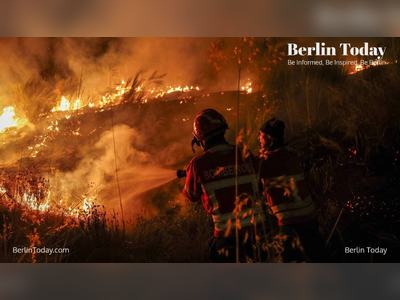Russian Forces Advance on Donetsk Front, Cutting Key Supply Routes Near Pokrovsk
Russian units penetrate deep into Ukrainian positions using infiltration tactics, seizing control of key roads and prompting intensified fighting near Dobropillia and Myrnohrad.
Russian forces have advanced approximately seventeen kilometres into Ukrainian-held territory on the Donetsk front, severing a major transport route through infiltration tactics.
The operation involved large-scale deployment of infantry without heavy equipment, exploiting a weakness in Ukrainian defences.
Reports indicate that if Russian drone teams are deployed effectively, the lack of mechanised assets may have limited impact.
In the Pokrovsk sector, Russian troops have moved toward Dobropillia on the eastern flank.
Fighting has been reported on the eastern approaches to the city, with the Dobropillia–Pokrovsk road between Blyzke and Rodynske blocked.
Supply routes into Pokrovsk and Myrnohrad are reported to be under Russian fire control, while the Dobropillia–Kramatorsk road has also been blocked and attacks have been launched toward Hryshyne, northwest of Pokrovsk.
Subsequent reports suggest Russian units have entered the northeast of Myrnohrad and the eastern part of Rodynske, positioning themselves within 600 to 700 metres of the road to Pokrovsk via Hryshyne.
Analysts monitoring the fighting stated that it remains unclear whether the penetration will remain localised or expand.
Some sources indicated that Ukrainian reserves are being moved to the sector from other areas of the front.
Open-source researchers cited manpower shortages, poor organisation, and ineffective command within Ukrainian units as contributing factors, alongside Russian resources and new infiltration methods bypassing fixed defences.
Russian infantry, possibly supported by light mechanised assets, reportedly broke through near Nyknorivka and reached a new defensive line along the Donetsk regional border.
The situation has prompted criticism from within Ukrainian ranks.
The former chief of staff of the Azov Brigade described systemic problems in reinforcement allocation, unit fragmentation, reserve deployment, and strategic planning.
He called for the dismissal of Ukraine’s Commander-in-Chief, Oleksandr Syrskyi.
Ukrainian police officials have disputed claims of a full breakthrough, describing the incidents as sabotage and reconnaissance group incursions.
Military commentators have questioned whether advances of more than ten kilometres can be classified as infiltration, noting that under current Russian tactics, breakthroughs can appear similar to small-unit penetrations.
Descriptions of the Russian infiltration method include troops advancing at night in pairs wearing anti-thermal cloaks, guided by drone surveillance.
Supplies are also delivered by drones, with follow-on teams moving along reconnaissance paths.
Reports state that these units avoid taking prisoners and may target civilians to prevent location disclosure, while risking disconnection from their own supply lines.
Some observers have linked the intensity of the offensive to upcoming talks between Vladimir Putin and Donald Trump.
Others have urged caution in describing the situation as a collapse, noting that Russian forces have breached Ukrainian lines but have not yet entered operational depth.
Russian sources described progress north of Pokrovsk as promising but acknowledged that Ukrainian reserves are reinforcing the area.
There is no confirmed consolidation of Russian positions near Dobropillia.
Russian officer Sviatoslav Golikov criticised the high cost and poor coordination of Russian assaults involving drone teams, warning that deep advances leave flanks vulnerable.
Ukrainian forces from the First Corps of the National Guard “Azov” reported taking up defensive positions in the Pokrovsk direction, including areas around Dobropillia and the Dobropillia–Kramatorsk road.
Additional reports indicate Russian entry into Rodynske, with geolocated footage showing Ukrainian artillery strikes.
On the eastern flank, Russian forces have reportedly taken Maiak and Pankivka and entered Vodymyrivka.
The operation involved large-scale deployment of infantry without heavy equipment, exploiting a weakness in Ukrainian defences.
Reports indicate that if Russian drone teams are deployed effectively, the lack of mechanised assets may have limited impact.
In the Pokrovsk sector, Russian troops have moved toward Dobropillia on the eastern flank.
Fighting has been reported on the eastern approaches to the city, with the Dobropillia–Pokrovsk road between Blyzke and Rodynske blocked.
Supply routes into Pokrovsk and Myrnohrad are reported to be under Russian fire control, while the Dobropillia–Kramatorsk road has also been blocked and attacks have been launched toward Hryshyne, northwest of Pokrovsk.
Subsequent reports suggest Russian units have entered the northeast of Myrnohrad and the eastern part of Rodynske, positioning themselves within 600 to 700 metres of the road to Pokrovsk via Hryshyne.
Analysts monitoring the fighting stated that it remains unclear whether the penetration will remain localised or expand.
Some sources indicated that Ukrainian reserves are being moved to the sector from other areas of the front.
Open-source researchers cited manpower shortages, poor organisation, and ineffective command within Ukrainian units as contributing factors, alongside Russian resources and new infiltration methods bypassing fixed defences.
Russian infantry, possibly supported by light mechanised assets, reportedly broke through near Nyknorivka and reached a new defensive line along the Donetsk regional border.
The situation has prompted criticism from within Ukrainian ranks.
The former chief of staff of the Azov Brigade described systemic problems in reinforcement allocation, unit fragmentation, reserve deployment, and strategic planning.
He called for the dismissal of Ukraine’s Commander-in-Chief, Oleksandr Syrskyi.
Ukrainian police officials have disputed claims of a full breakthrough, describing the incidents as sabotage and reconnaissance group incursions.
Military commentators have questioned whether advances of more than ten kilometres can be classified as infiltration, noting that under current Russian tactics, breakthroughs can appear similar to small-unit penetrations.
Descriptions of the Russian infiltration method include troops advancing at night in pairs wearing anti-thermal cloaks, guided by drone surveillance.
Supplies are also delivered by drones, with follow-on teams moving along reconnaissance paths.
Reports state that these units avoid taking prisoners and may target civilians to prevent location disclosure, while risking disconnection from their own supply lines.
Some observers have linked the intensity of the offensive to upcoming talks between Vladimir Putin and Donald Trump.
Others have urged caution in describing the situation as a collapse, noting that Russian forces have breached Ukrainian lines but have not yet entered operational depth.
Russian sources described progress north of Pokrovsk as promising but acknowledged that Ukrainian reserves are reinforcing the area.
There is no confirmed consolidation of Russian positions near Dobropillia.
Russian officer Sviatoslav Golikov criticised the high cost and poor coordination of Russian assaults involving drone teams, warning that deep advances leave flanks vulnerable.
Ukrainian forces from the First Corps of the National Guard “Azov” reported taking up defensive positions in the Pokrovsk direction, including areas around Dobropillia and the Dobropillia–Kramatorsk road.
Additional reports indicate Russian entry into Rodynske, with geolocated footage showing Ukrainian artillery strikes.
On the eastern flank, Russian forces have reportedly taken Maiak and Pankivka and entered Vodymyrivka.
Translation:
Translated by AI
AI Disclaimer: An advanced artificial intelligence (AI) system generated the content of this page on its own. This innovative technology conducts extensive research from a variety of reliable sources, performs rigorous fact-checking and verification, cleans up and balances biased or manipulated content, and presents a minimal factual summary that is just enough yet essential for you to function as an informed and educated citizen. Please keep in mind, however, that this system is an evolving technology, and as a result, the article may contain accidental inaccuracies or errors. We urge you to help us improve our site by reporting any inaccuracies you find using the "Contact Us" link at the bottom of this page. Your helpful feedback helps us improve our system and deliver more precise content. When you find an article of interest here, please look for the full and extensive coverage of this topic in traditional news sources, as they are written by professional journalists that we try to support, not replace. We appreciate your understanding and assistance.










